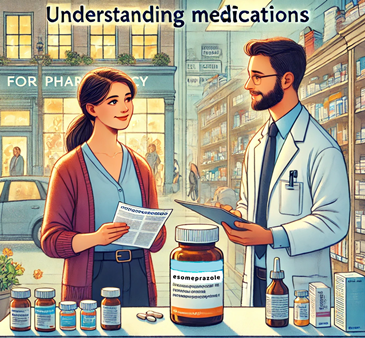by Chris Whitehead
Share

Medications for Seasonal Allergies: A Comprehensive Guide for Pharmacists and Pharmacy Technicians
Seasonal allergies, also known as hay fever or allergic rhinitis, are a common condition that affects millions of people worldwide. As pharmacists and pharmacy technicians, understanding the medications used to manage these allergies is essential to provide optimal patient care. This blog post will cover the mechanism of action, side effects, dosing, and commonly prescribed medications for seasonal allergies.
Understanding Seasonal Allergies
Seasonal allergies occur when the immune system overreacts to allergens like pollen, mold spores, or dust mites. These allergens trigger the release of histamine and other inflammatory mediators, leading to symptoms such as sneezing, itching, nasal congestion, and watery eyes. The goal of treatment is to alleviate these symptoms by inhibiting the effects of histamine and reducing inflammation.
Mechanism of Action of Allergy Medications
- Antihistamines
Antihistamines are the cornerstone of allergy treatment. They work by blocking the histamine H1 receptors, preventing histamine from binding and exerting its effects on the body. This helps reduce symptoms like sneezing, itching, and runny nose.
- First-Generation Antihistamines: These include diphenhydramine (Benadryl) and chlorpheniramine. They are highly effective but often cause sedation due to their ability to cross the blood-brain barrier.
- Second-Generation Antihistamines: These include cetirizine (Zyrtec), loratadine (Claritin), fexofenadine (Allegra), and levocetirizine (Xyzal). They are less likely to cause drowsiness as they do not readily cross the blood-brain barrier.
- Intranasal Corticosteroids
Intranasal corticosteroids are the most effective treatment for moderate to severe allergic rhinitis. They reduce inflammation by inhibiting multiple inflammatory pathways, including the release of cytokines and the recruitment of inflammatory cells.
- Common Agents: Fluticasone (Flonase), mometasone (Nasonex), and budesonide (Rhinocort) are commonly prescribed. These agents help relieve nasal congestion, sneezing, and itching.
- Decongestants
Decongestants work by stimulating α-adrenergic receptors, leading to vasoconstriction of nasal blood vessels. This reduces nasal congestion and improves airflow.
- Oral Decongestants: Pseudoephedrine (Sudafed) is the most commonly used oral decongestant.
- Intranasal Decongestants: Oxymetazoline (Afrin) is an effective topical decongestant. However, it should be used for no more than three consecutive days to avoid rebound congestion (rhinitis medicamentosa).
- Leukotriene Receptor Antagonists
Leukotriene receptor antagonists, such as montelukast (Singulair), block the effects of leukotrienes, which are inflammatory mediators involved in allergic reactions. These medications are particularly useful in patients with both allergic rhinitis and asthma.
- Mast Cell Stabilizers
Mast cell stabilizers, like cromolyn sodium (NasalCrom), work by preventing the release of histamine and other mediators from mast cells. They are less potent than corticosteroids but can be useful for prophylaxis.
Commonly Prescribed Medications
- Cetirizine (Zyrtec)
- Class: Second-generation antihistamine
- Mechanism: H1 receptor antagonist
- Dosing: 10 mg once daily
- Common Side Effects: Drowsiness (less than first-generation antihistamines), dry mouth, fatigue
- Loratadine (Claritin)
- Class: Second-generation antihistamine
- Mechanism: H1 receptor antagonist
- Dosing: 10 mg once daily
- Common Side Effects: Headache, fatigue, dry mouth
- Fexofenadine (Allegra)
- Class: Second-generation antihistamine
- Mechanism: H1 receptor antagonist
- Dosing: 60 mg twice daily or 180 mg once daily
- Common Side Effects: Headache, dizziness, dry mouth
- Levocetirizine (Xyzal)
- Class: Second-generation antihistamine
- Mechanism: H1 receptor antagonist
- Dosing: 5 mg once daily in the evening
- Common Side Effects: Drowsiness, dry mouth, fatigue
- Fluticasone (Flonase)
- Class: Intranasal corticosteroid
- Mechanism: Inhibits inflammatory cytokines and mediators
- Dosing: 2 sprays in each nostril once daily (may reduce to 1 spray per nostril daily for maintenance)
- Common Side Effects: Nasal irritation, epistaxis, throat irritation
- Pseudoephedrine (Sudafed)
- Class: Oral decongestant
- Mechanism: α-adrenergic agonist causing vasoconstriction
- Dosing: 60 mg every 4-6 hours as needed (maximum 240 mg/day)
- Common Side Effects: Insomnia, nervousness, hypertension
- Montelukast (Singulair)
- Class: Leukotriene receptor antagonist
- Mechanism: Blocks leukotriene receptors to reduce inflammation
- Dosing: 10 mg once daily in the evening
- Common Side Effects: Headache, dizziness, potential for neuropsychiatric effects
- Diphenhydramine (Benadryl)
- Class: First-generation antihistamine
- Mechanism: H1 receptor antagonist
- Dosing: 25-50 mg every 4-6 hours as needed (maximum 300 mg/day)
- Common Side Effects: Significant drowsiness, dry mouth, urinary retention
Side Effects to Monitor
While allergy medications are generally well-tolerated, they can cause side effects that may impact patient adherence. Some of the most common side effects include:
- Sedation: Common with first-generation antihistamines like diphenhydramine. Patients should be advised to avoid operating heavy machinery or driving while taking these medications.
- Dry Mouth: Both first- and second-generation antihistamines can cause dry mouth. Patients can be counseled on the use of sugar-free candies or gum to alleviate this symptom.
- Rebound Congestion: Associated with prolonged use of intranasal decongestants. It's crucial to educate patients on the appropriate duration of use.
- Hypertension: Oral decongestants like pseudoephedrine can increase blood pressure, so they should be used cautiously in patients with hypertension.
Conclusion
Seasonal allergies are a significant concern for many patients, and as healthcare professionals, pharmacists and pharmacy technicians play a crucial role in managing these conditions. Understanding the mechanism of action, common side effects, dosing, and commonly prescribed medications is essential for optimizing patient outcomes. By providing comprehensive counseling and monitoring for adverse effects, we can help our patients achieve better control of their allergy symptoms and improve their quality of life.
The Allergy Odyssey
Sarah sat at the kitchen table, tissues strewn about like confetti after a party. Her eyes were red and itchy, her nose a faucet that wouldn’t shut off. Spring had arrived, and so had her seasonal allergies, but this year felt worse than ever. She had tried everything—almost.
On Monday, she started with Cetirizine (Zyrtec). "This should work," she thought, popping a 10 mg tablet. It did help, but by mid-afternoon, she felt sluggish, her eyelids heavy. "Maybe this isn't the one for me," she muttered, reaching for another tissue.
Tuesday brought a new attempt: Loratadine (Claritin). "Non-drowsy," the box promised. But despite the 10 mg dose, she found herself battling the same symptoms by late morning. Frustration bubbled up as she tossed the box into her medicine cabinet.
By Wednesday, Sarah decided to try Fexofenadine (Allegra). Two 60 mg doses later, she felt more awake, but the itching in her eyes persisted, a constant reminder that her search wasn’t over. "This is exhausting," she sighed.
Thursday was a disaster. She tried Diphenhydramine (Benadryl), thinking maybe an older, tried-and-true option might do the trick. The 25 mg tablet knocked her out cold. She spent the afternoon napping, missing a crucial work meeting. "Definitely not this one," she grumbled.
Friday arrived, and with it, a faint hope. Sarah had read about Levocetirizine (Xyzal), but she hadn’t tried it yet. "Maybe tonight," she thought, eyeing the 5 mg tablet on the counter.
Before taking it, she decided to stop by her local pharmacy for advice. She approached the counter, where Mr. Jenkins, the pharmacist, greeted her with a warm smile.
"Rough allergy season, huh?" he asked, noticing her disheveled appearance.
"You have no idea," Sarah replied. "I've tried everything, and nothing works for me."
Mr. Jenkins nodded thoughtfully. "It sounds like you've been through quite a few. Have you tried Xyzal yet?"
"Not yet, but I’ve heard good things," she said.
"It's a good option," he confirmed. "It’s similar to Zyrtec but tends to cause less drowsiness. Take it in the evening, and you might find it controls your symptoms better without knocking you out."
That evening, Sarah took Mr. Jenkins’ advice. She swallowed the 5 mg Xyzal tablet and went to bed, hoping for the best.
The next morning, she woke up and immediately noticed something different. Her eyes weren’t itchy, her nose wasn’t running, and she felt... normal. No drowsiness, no grogginess, just relief.
As she walked to the kitchen, she smiled for the first time all week. "Finally," she said to herself, feeling like she had conquered her allergies at last. Mr. Jenkins had been right—Xyzal was the one for her.
That Saturday, Sarah ventured outside, the sun shining brightly. She inhaled deeply, savoring the scent of blooming flowers without the usual sneeze that followed. Her allergy odyssey had come to an end, thanks to the right advice and the right medication.





